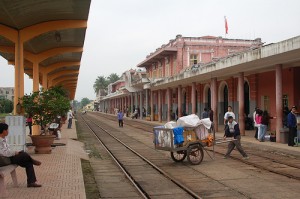 Hue, the former imperial capital of Vietnam, is located in the center of the country. It is directly connected to the Nguyễn Dynasty. During the Vietnam War it went through hard times when it was conquered by Viet Cong and then bombarded by the Americans. Many travelers visit the city for the Imperial Citadel and the Tombs of the Emperors.
Hue, the former imperial capital of Vietnam, is located in the center of the country. It is directly connected to the Nguyễn Dynasty. During the Vietnam War it went through hard times when it was conquered by Viet Cong and then bombarded by the Americans. Many travelers visit the city for the Imperial Citadel and the Tombs of the Emperors.
Quick summary
Trains are the best choice for traveling between Hanoi and Hue. You’ll spend 13-15 hours traveling but you’ll be in a comfortable bed with AC and also have access to restaurant car. If you are in a hurry, consider flying (about three times as expensive as the train).
Flights from Hanoi (airport code: HAN) to Hue
Noi Bai International Airport (HAN) is the airport serving Hanoi , a hub for Air Mekong and Vietnam Airlines. Hue is served by Phu Bai International Airport (HUI) and only receives flights from Hanoi and Ho Chi Minh City.
Flights between the two cities are run only by Vietnam Airlines, which means there’s no competition on the route and the rates are not very low. If you book via large booking engines (such as Kayak), a single adult fare starts at US$200. On local websites you can find flights (for the same dates and airline) from US$87. The flight time is 1h 10 min.
>>read more about Cheap Flights to Hanoi
Trains from Hanoi to Hue
Hue is located on the North – South ‘Reunification’ Main Line, which connects the capital of Hanoi to Ho Chi Minh City. Over the years this route has seen some improvements, all trains having AC cars.
There are 6 main trains connecting Hanoi to Hue daily (more connections available during the Tet holiday period). The travel time between the two cities is between 13 hours and 15 hours, depending on the train you choose. Overnight trains are available.
The SE1 (7 p.m. daily) and SE3 (11 p.m. daily) trains are the best choices as they have three types of sleepers , all with AC and a restaurant car. Tickets range from 442000 dong / US$21.20 (soft seat, AC) to 748000 dong / US$36 (soft sleeper AC).
>>read more about Train travel in Vietnam
Buses from Hanoi to Hue
There are frequent buses connecting Hanoi to Hue, a route which is mostly popular among locals. The travel time is 13-14 hours and if you have problems with motion sickness it’s advisable to choose another means of transportation. For this route, tourists are advised to take the train as it offers a more comfortable alternative at good prices.
>>read more about Bus travel in Vietnam
 Sapa is a picturesque village located in northern Vietnam, close to the border with China. It is a major travel destination and is appreciate both for its landscape and cultural diversity. The surrounding countryside is characterized by lush vegetation, rice terraces and you can also find the highest peak in Vietnam here. Along with Halong Bay, Sapa is another popular side trip from Hanoi.
Sapa is a picturesque village located in northern Vietnam, close to the border with China. It is a major travel destination and is appreciate both for its landscape and cultural diversity. The surrounding countryside is characterized by lush vegetation, rice terraces and you can also find the highest peak in Vietnam here. Along with Halong Bay, Sapa is another popular side trip from Hanoi. 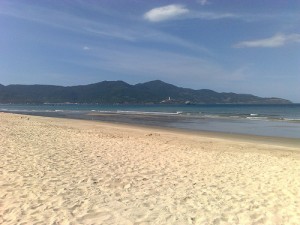 Not many travelers know that Vietnam is one of the
Not many travelers know that Vietnam is one of the 
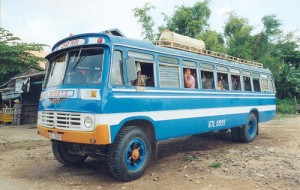 Flying is the fastest way to travel within the country, but it’s also the most expensive (although compared to other countries, it’s still cheap). Traveling by bus in Vietnam is the most popular way to get around the country if you are on a low budget. You can stop wherever you want, stay there as much as you want and then continue your journey. Compared to the train, the bus hardly offers a comfortable trip (it most often is described as feeling like in a sardine can). However, it remains the cheapest way to get around Vietnam.
Flying is the fastest way to travel within the country, but it’s also the most expensive (although compared to other countries, it’s still cheap). Traveling by bus in Vietnam is the most popular way to get around the country if you are on a low budget. You can stop wherever you want, stay there as much as you want and then continue your journey. Compared to the train, the bus hardly offers a comfortable trip (it most often is described as feeling like in a sardine can). However, it remains the cheapest way to get around Vietnam. 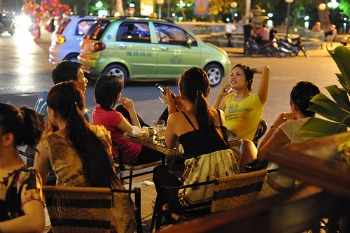 Who among those of us who love to travel hasn’t fallen so in love with one place or another during a trip, so much so that you’d consider
Who among those of us who love to travel hasn’t fallen so in love with one place or another during a trip, so much so that you’d consider  Vietnam is heaven for anyone who loves trying exotic dishes, who delights in the discovery of delicious and low-cost eats, and who lives to sample new street food. The food in Vietnam is delicious, healthy, and cheap and is an excellent way to better understand the culture. As
Vietnam is heaven for anyone who loves trying exotic dishes, who delights in the discovery of delicious and low-cost eats, and who lives to sample new street food. The food in Vietnam is delicious, healthy, and cheap and is an excellent way to better understand the culture. As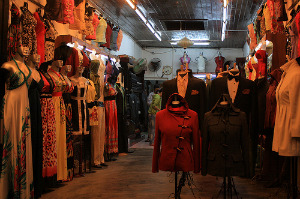 You don’t have to be a fashionista to appreciate having nice clothes to wear. But most of the time, you do get what you pay for – which means budget travelers who are more intent on travel than on accumulating “stuff” will pass over quality clothing pieces in favor of saving that money for a trip. But more travelers are discovering the custom tailoring done in Hoi An for a fraction of what it would cost anywhere else in the world. So in this case, you really can have your cake and eat it, too.
You don’t have to be a fashionista to appreciate having nice clothes to wear. But most of the time, you do get what you pay for – which means budget travelers who are more intent on travel than on accumulating “stuff” will pass over quality clothing pieces in favor of saving that money for a trip. But more travelers are discovering the custom tailoring done in Hoi An for a fraction of what it would cost anywhere else in the world. So in this case, you really can have your cake and eat it, too.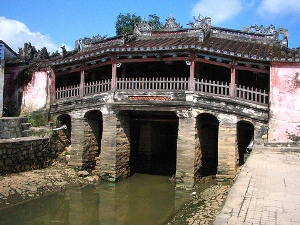 Hoi An was a very important seaport in the 16th century. Today it’s a small city on the coast of South China Sea and has been declared a World Heritage site by UNESCO in 1999.
Hoi An was a very important seaport in the 16th century. Today it’s a small city on the coast of South China Sea and has been declared a World Heritage site by UNESCO in 1999.